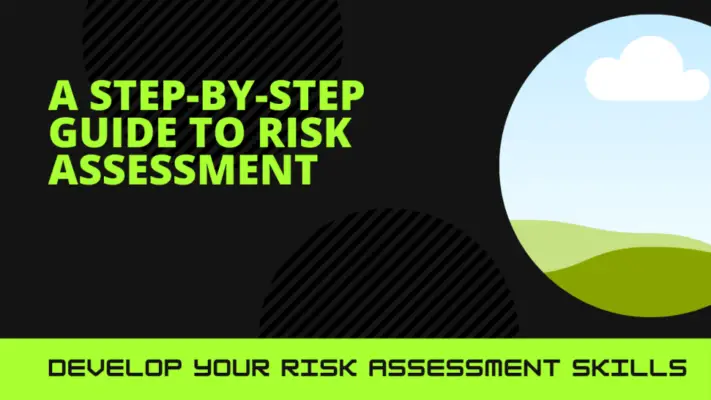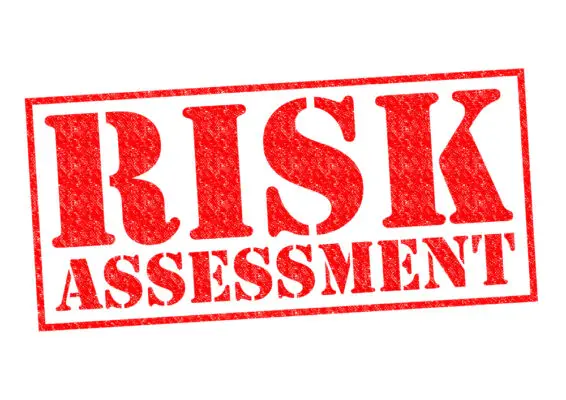Risk assessment is a crucial component in various fields, such as finance, engineering, and public health.
Central to this process is the concept of likelihood, which refers to the probability or chance of an event occurring that may lead to potential risk. Understanding and accurately assessing likelihood is essential for evaluating and managing risks effectively.
This article will delve into the definition of likelihood in risk assessment and its significance in decision-making and risk mitigation.
We will explore the role of likelihood in evaluating and managing risks and the factors that can influence the likelihood of an event occurring.
Furthermore, we will discuss different methods and approaches used to quantify likelihood.
Through a thorough analysis of these factors, individuals will understand the important role probability plays in evaluating risk.
This knowledge can assist professionals across various industries make informed decisions regarding identifying, assessing, and mitigating potential risks.

Understanding the Concept of Likelihood in Risk Assessment
Understanding the likelihood concept in risk assessment is crucial for accurately evaluating and quantifying potential risks.
Probability plays a vital role in risk assessment, as it allows us to assess the chance or possibility of an event occurring. This information helps decision-makers prioritize risks and determine appropriate mitigation strategies.
Likelihood is an essential component of risk analysis, as it provides insight into the frequency or probability of a specific event happening within a given timeframe.
Interpreting likelihood involves considering historical data, expert judgment, and statistical analysis. It requires a methodical approach to ensure consistency and reliability in risk assessments.
Organizations can make informed decisions regarding resource allocation, risk treatment options, and overall risk management strategies by properly interpreting likelihood.
The Role of Likelihood in Evaluating and Managing Risks
One important aspect to consider when evaluating and managing risks is the role played by the probability of occurrence. The likelihood, the probability that a particular event or scenario will occur, is a key factor in assessing and understanding risks.
It provides insight into the chances of an adverse event and allows for a more accurate estimation of potential impacts.
Organizations can effectively allocate resources and implement risk mitigation strategies by prioritizing the management of risks with higher probabilities of occurrence.
They can ensure that their efforts and resources are utilized efficiently by evaluating risks based on their likelihood.
Furthermore, the likelihood also aids decision-making by providing a quantitative measure that can be compared against other factors such as consequence or impact.
Overall, incorporating likelihood into risk assessment enables organizations to make informed decisions regarding risk management and enhance overall organizational resilience.
Factors Affecting the Likelihood of an Event Occurring
Factors influencing the probability of an event occurring include the historical occurrence of similar events, the presence or absence of necessary conditions, and the effectiveness of existing control measures.
These factors play a crucial role in assessing and managing risks.
The causes and consequences associated with an event are essential in determining its likelihood. By examining past occurrences of similar events, one can identify patterns and trends that may increase or decrease the likelihood of future incidents.
Additionally, the presence or absence of necessary conditions directly affects the probability of an event occurring. For example, if certain safety measures are not in place, the likelihood of accidents or failures may be higher.
Furthermore, evaluating the effectiveness of existing control measures is vital as it helps determine how well risks are being mitigated and managed.
Risk assessors can accurately estimate the likelihood of events by considering these factors and making informed decisions regarding risk management strategies.
Quantifying Likelihood: Methods and Approaches
Quantifying the likelihood of an event occurring involves employing various methods and approaches that allow for a more objective and comprehensive analysis.
Risk quantification is essential in risk assessment, providing a numerical representation of an event’s likelihood.
Probability assessment, one of the common methods, involves calculating an event’s probability based on historical data, expert judgment, or mathematical models.
Another approach is scenario analysis, where different scenarios are developed to assess the likelihood of each outcome.
Sensitivity analysis is also utilized to determine how changes in certain variables can affect the probability of an event occurring.
Finally, statistical techniques such as regression analysis and Monte Carlo simulation estimate probabilities and quantify uncertainty in complex situations.
These methods help provide a rigorous and systematic framework for assessing the likelihood component in risk assessment.

The Significance of Likelihood in Decision-Making and Risk Mitigation
The significance of evaluating the likelihood of an event extends beyond risk assessment, as it plays a pivotal role in informing decision-making processes and guiding effective risk mitigation strategies.
Probability, or the likelihood of an event happening, is a fundamental component of risk analysis. It allows for the quantification and comparison of different risks, enabling organizations to prioritize their resources and efforts accordingly.
By understanding the likelihood of various events, decision-makers can allocate resources to address high-risk scenarios first, minimizing potential negative consequences.
Likelihood also influences risk prioritization by considering an event’s probability and potential impact. This ensures that risks with a high likelihood but low impact are not overlooked while maintaining focus on those with significant consequences.
Therefore, accurately assessing likelihood is crucial in making informed decisions and implementing successful risk mitigation strategies.
Frequently Asked Questions
What are some common misconceptions about the concept of likelihood in risk assessment?
Some common misconceptions about the likelihood concept in risk assessment include ignoring factors that can affect likelihood, such as human error or external events. Understanding these factors is crucial for an accurate assessment of risk.
How does the concept of likelihood differ from the concept of severity in risk assessment?
The concept of likelihood in risk assessment differs from the concept of severity by focusing on the probability or frequency of an event occurring, while severity assesses the potential impact or harm caused by that event.
Factors affecting likelihood assessment include historical data, expert judgment, and statistical models.
Are there any legal or regulatory frameworks that provide guidelines for assessing and quantifying likelihood in risk assessment?
Legal frameworks and regulatory guidelines are crucial for assessing and quantifying likelihood in risk assessment.
These frameworks establish standardized methods and criteria to ensure consistency and objectivity in evaluating likelihood.
Can likelihood be accurately predicted, or is it subjective and based on expert judgment?
Predicting likelihood in risk assessment can involve both quantitative and qualitative approaches.
Data analysis is crucial in quantitatively predicting likelihood, while expert judgment is often employed for qualitative assessments.
How do considering likelihood in decision-making and risk mitigation strategies differ between different industries or sectors?
The consideration of likelihood in decision-making and risk mitigation strategies differs between manufacturing and healthcare industries.
While both sectors rely on historical data to assess the likelihood, the specific factors they consider may vary due to industry-specific risks and regulations.

Conclusion
In conclusion, likelihood plays a crucial role in risk assessment as it helps evaluate and manage risks effectively. Various factors influence the likelihood of an event occurring, and quantifying it requires specific methods and approaches.
The significance of likelihood lies in its contribution to decision-making processes and risk mitigation strategies.
Individuals and organizations must have a comprehensive understanding and accurate assessment of the likelihood of events taking place. This empowers them to make informed decisions that mitigate risks and enhance safety protocols.

Chris Ekai is a Risk Management expert with over 10 years of experience in the field. He has a Master’s(MSc) degree in Risk Management from University of Portsmouth and is a CPA and Finance professional. He currently works as a Content Manager at Risk Publishing, writing about Enterprise Risk Management, Business Continuity Management and Project Management.

